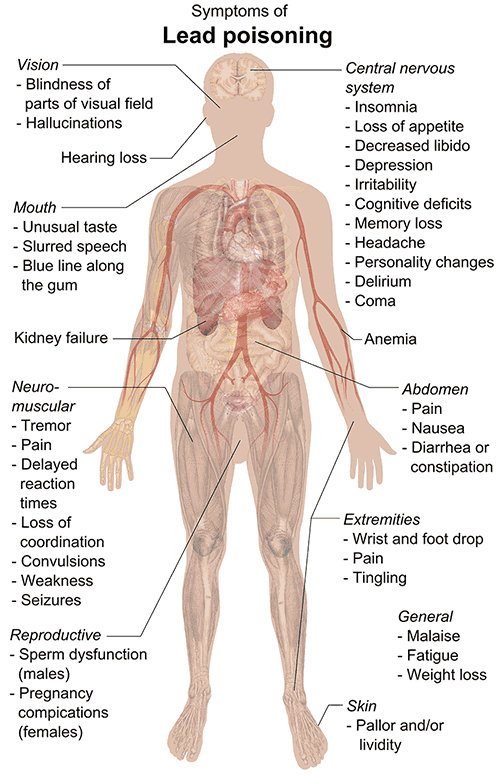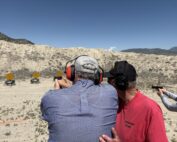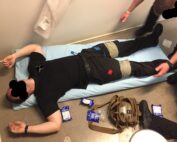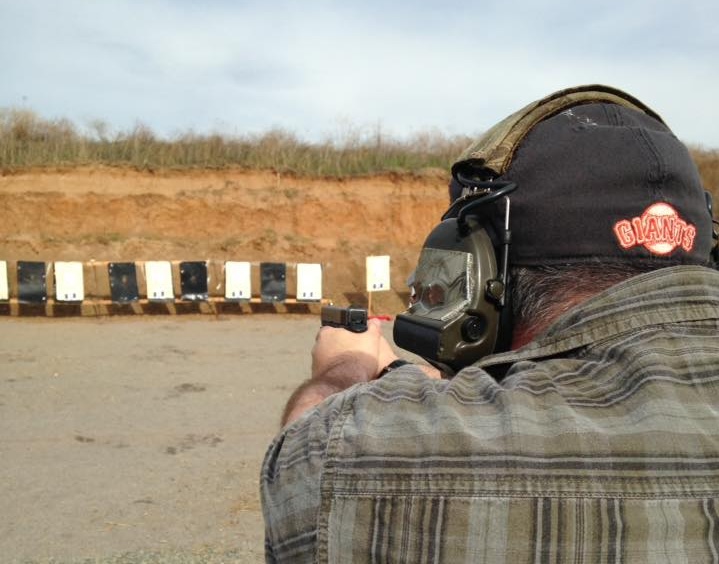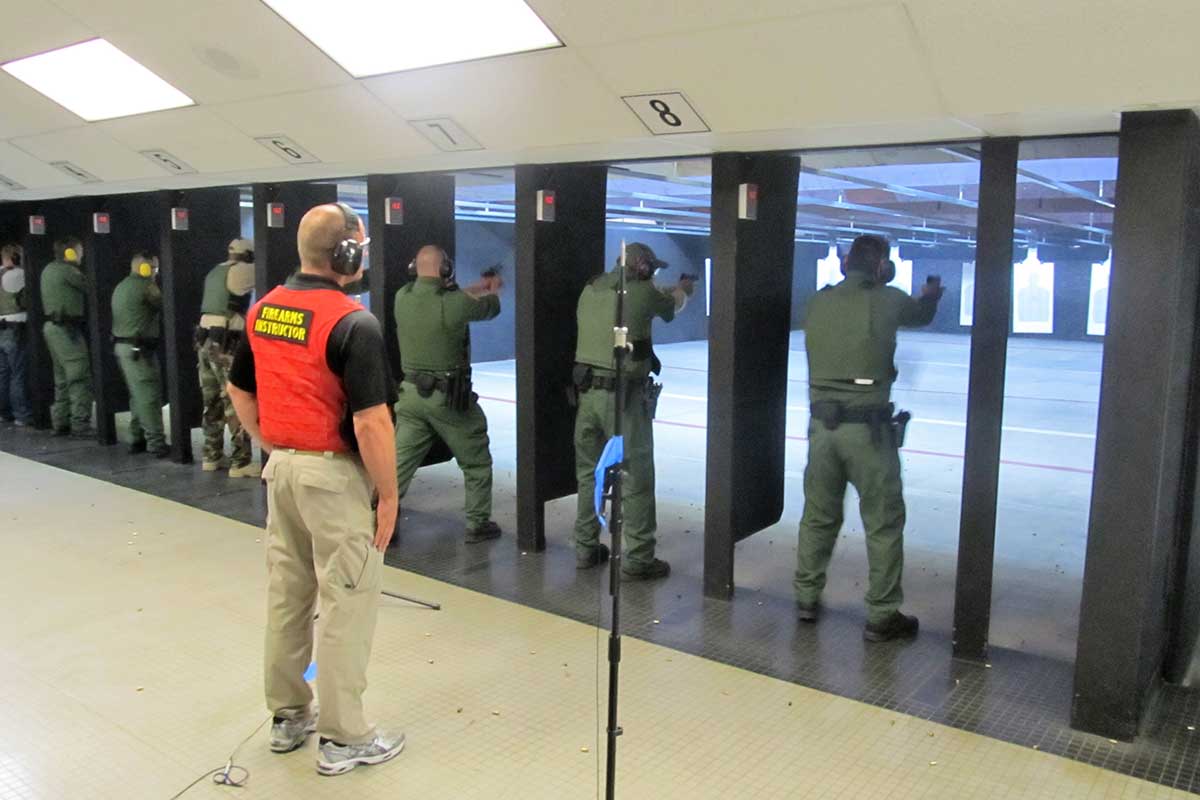
AC-022321-Lead-Hazards-LH-1-800
The risk of lead poisoning is a very real safety hazard that every agency and officer needs to take heed of and take steps to mitigate. Every shooter does, as well. It’s a hidden danger at shooting ranges that can be deadly. The risk is much greater than most people realize. Lead exposure even at low levels can cause damage over time.
Lead is a toxic heavy metal that shooters are exposed to every day. Poorly ventilated indoor shooting ranges pose the greatest risk. According to studies, lead exposure can rise dramatically during practice at indoor shooting ranges. Permissible exposure limits can literally be exceeded within minutes.
Range personnel and others who work or shoot regularly at indoor shooting ranges are at greatest risk from lead poisoning. Firearms instructors have died as the result of airborne lead exposure at firing ranges.
Shooters and their families are exposed to
lead residues from two sources—lead in the cartridge
priming compound and lead in the bullet.
Lead affects almost every organ of the body. Lead causes severe health effects at even relatively low levels in the body. It damages the brain, nervous system, kidneys, heart, reproductive system, and interferes with hemoglobin production. It also affects behavior. At typical levels of exposure, the blood, brain, and nervous system are primarily affected. The effects are often irreversible.
The gradual onset of symptoms of lead poisoning and the lack of specificity of the symptoms, which often affect more than one part of the body at a single time, results in lead poisoning often being misdiagnosed. The classic textbook physical signs of lead poisoning may not even be present. The symptoms of lead poisoning are often vague. Unless the patient raises the issue of lead poisoning or the doctor is extremely suspicious and the appropriate testing is done lead poisoning will go unrecognized.
Exposure to lead during pregnancy can cause birth defects and miscarriages. Lead in the mother’s bloodstream easily passes through the placenta to the fetus and may cause gross deformation in development.

Federal law enforcement officers during firearms training exercises at indoor shooting range. Lead poisoning is a hidden danger at shooting ranges. There are steps that we need to take to help mitigate that risk. Photo: NIOSH. Public Domain.
The margin of safety between measured blood lead levels and the levels that cause clinical symptoms is small. Children are more at risk than adults, as harmful effects from lead begin at lower blood levels. Although lead blood levels in children have been declining as a result of regulations designed to cut lead exposure, studies of the blood lead levels in children show concentrations of lead that are already above the levels that are known to cause changes in blood enzymes.
Shooters and their families are exposed to lead residues from two sources—lead in the cartridge priming compound and lead in the bullet. When a cartridge primer detonates and the powder charge is ignited, a cloud of lead particles is expelled into the air and onto the shooter’s hands. Additional lead particles are sheared off the bullet as it travels down the barrel and expelled into the air at the muzzle. Lead is also expelled into the air when the bullet impacts the target.
When lead particles are inhaled into the lungs they are absorbed into the bloodstream. Approximately 50% of the lead that’s inhaled reaches the bloodstream. Lead residues on the skin or in the hair can be absorbed through the pores. If any lead is ingested through the mouth, it will be absorbed through the intestines and enter the bloodstream. The amount of ingested lead that reaches the bloodstream will vary depending on the form of the lead. While approximately 10% of ingested lead reaches the bloodstream,100% of ingested lead salts reaches the bloodstream.
According to the National Institute of Standards and Technology (NIST), formerly known as the National Bureau of Standards, lead bullets are the source of 80% of the airborne lead at indoor firing ranges. Although primers are the source of only 20% of the airborne lead, the airborne lead from primers is much more fine and more easily absorbed into the bloodstream when inhaled. The risks from ingestion of lead is also greater since lead salts are formed when a conventional lead styphnate primer is ignited.
Although this article deals with lead, readers should be aware that lead isn’t the only health hazard from conventional primers. Although most U.S. suppliers have non-toxic primers, styphnate primers, and some lead-free primers contain barium nitrate as an oxidizer. Antimony is another health hazard in conventional primer mixes.
It doesn’t take much lead to cause lead poisoning. Only 0.16-grain of lead in the bloodstream can result in acute lead poisoning. That is just 1/1000th of the amount of lead in a single .38 Special/.357 Magnum 158-grain lead semi-wadcutter bullet!
Chronic poisoning from exposure to low-levels of lead is more common than acute poisoning. Lead exposure is cumulative. Lead can gradually build up in the body over time, reaching toxic concentration after years of exposure.
The body treats lead like calcium. Approximately 94% of the lead that enters the bloodstream is deposited in the bone. The remaining 6% is deposited in the blood and soft body organs. Stored lead can be mobilized from the bone and re-enter the bloodstream during times of calcium deficiency or increased calcium requirements, such as during pregnancy or lactation.
The body does have the ability to gradually eliminate lead. The amount of time that is required is measured by what is known as “half-life.” Half-life is the amount of time required by the body to excrete one-half of the lead dose. Lead in the blood and soft body tissues has a half-life of about 30 to 40 days. Lead in the bone has a half-life of about 20 years. Most lead excretion is through the kidneys. Lesser amounts are excreted through the bile, sweat, hair, and nails. Factors such as the total dose and length of time of exposure also play a factor in the elimination of lead from the body.
PREVENTION ALWAYS BEST
There are two basic ways in which the risk of toxic effects from lead can be minimized — by reducing exposure and through proper nutrition. Obviously, the best way to reduce the risk is to take precautions to reduce exposure to lead. However, since some exposure to lead is unavoidable, proper nutrition is also essential to reduce the risks from exposure.
There are a number of simple precautions shooters can take to reduce the risk of exposure to lead. Shoot at well-ventilated ranges. Indoor shooting ranges have a greater problem with lead dust and airborne lead residues than outdoor ranges. Ranges should be monitored for lead and conform to Occupational Safety and Health Administration (OSHA) standards. Unjacketed ammo poses a greater problem than jacketed ammo. Shotgun ammunition poses a greater problem than handgun or rifle ammo.
Use ammo with non-toxic primers and either a TMJ (Total Metal Jacket) bullet, TSJ (Total Synthetic Jacket) bullet or a non-toxic bullet whenever possible for qualification and shooting practice, especially when firing on indoor shooting ranges.
Lead-free ammo was first introduced in the U.S. by CCI® over 35 years ago. Today, lead-free ammo is available from a number of manufacturers. The primers contain no lead and the bullets either contains no lead or, if the bullet has a lead core, the bullet is totally enclosed in copper. Many agencies have transitioned to lead-free ammo for training use.

Federal American Eagle Syntech ammunition features Total Synthetic Jacket (TSJ) wrapped around a soft lead bullet, plus the high-performance, lead-free Catalyst primer and specialized clean-burning powder packed in a reloadable brass case.
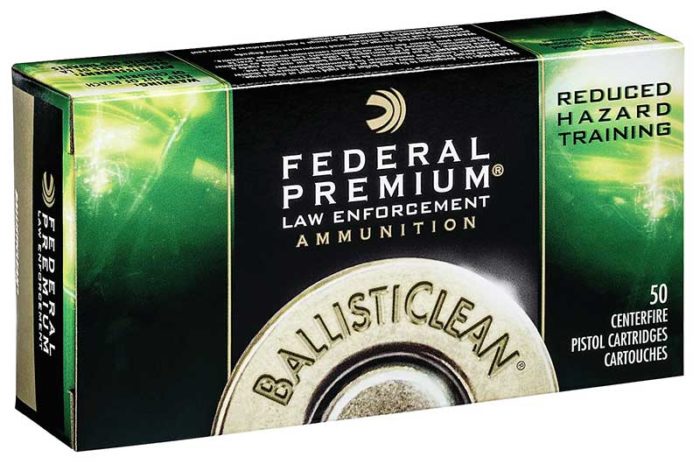
Designed for law enforcement training, Federal Premium Law Enforcement BallistiClean frangible loads are free of toxic lead. They provide uncompromising reliability and performance with Catalyst, the only 100% lead-free primer design proven as reliable as conventional lead styphnate primers.
Note: Generally non-toxic primers are less reliable than conventional lead styphnate primers. For this reason, lead-free ammo is not recommended for duty and self-defense use.
Don’t collect fired brass in caps. Lead residues on the brass can contaminate the cap and be absorbed into the skin when the cap is later worn. Don’t eat, drink or, especially, smoke on the range. Lead residues on your hands and face can be ingested. Airborne lead can also contaminate food, drinks and tobacco products and be ingested. Smoking increases the absorption of inhaled lead into the blood stream.
Thoroughly wash your hands and face after shooting with soap and cold water. Warm water shouldn’t be used since it will open the pores in the skin. Wash your hands and face before eating, drinking or applying cosmetics. Your hair should also be shampooed to remove residues.
Only certain lead compounds can be absorbed through the skin. The typical lead and lead oxide dust residues from shooting by-products must be inhaled or ingested, and are unlikely to be absorbed through dermal contact alone. The danger with lead on the skin or in the pores is that it can collect there and not always be removed by less than thorough hand washing.
Thoroughly wash your hands and face after shooting
with soap and cold water. Warm water shouldn’t be
used since it will open the pores in the skin.
It’s always a good idea to change your clothes and shoes before entering your residence. As an alternative, protective apparel, such as coveralls and disposable shoe coverlets can be worn while at the range. Clothing and shoes can transport lead into your home.
Wash contaminated clothing separately from other clothing to avoid cross contamination. Contaminated clothing shouldn’t be shaken to remove lead residues as this will result in lead particles becoming airborne.
Clean firearms in a well-ventilated area, preferably outside of your residence. It’s a good practice to wear disposable gloves while cleaning firearms.
Never dry sweep firing ranges. Standard vacuums shouldn’t be used to remove lead dust, either, since they will only circulate the lead into the air. A HEPA vacuum with a three-stage particulate air filter should be used for this purpose. Dispose of lead properly as hazardous waste.
PROPER NUTRITION
Deficiencies in dietary minerals can speed the absorption of lead into the bloodstream from the gastrointestinal system. Adequate amounts of calcium and phosphorus are especially important, as too are adequate amounts of copper, iron and magnesium.
It has been said that milk can reduce lead in the body, however, recent research indicates that lactose (milk sugar) may hasten the absorption of lead.
Some research indicates that vitamins C and E may help prevent brain damage caused by high exposures to lead. Both vitamins are essential to keep blood cells healthy. Research conducted in Russia indicates that pectin, a polysaccharide occurring in plant tissues, such as apple skins, may also help protect blood cells from damage due to lead.
SYMPTOMS OF LEAD POISONING
Symptoms of lead poisoning typically develop slowly. They are often vague and may resemble “flu-like” illnesses. Symptoms of lead poisoning may include headache, poor appetite, dizziness, irritability, anxiety, constipation, pallor, excessive tiredness, numbness, metallic taste in the mouth, muscle and joint pain or soreness, sleeplessness, hyperactivity, weakness, reproductive difficulties, nausea, fine tremors, insomnia, “lead line” on the gums, and weakness of extensor muscles (“wrist drop”). If lead poisoning is suspected, prompt medical attention should be obtained.

Testing kits, such as the 3M LeadCheck Swabs, are commercially available for detecting lead on surfaces. The swabs, when wiped on a surface, turn red in the presence of lead. Photo: 3M Company.
TESTING FOR LEAD LEVELS
There are several tests that may be performed to test for lead levels in the body. A blood lead level (BLL) test may be performed to detect recent exposure to lead. The BLL does not provide information on past or long term exposure. A test known as the zinc protoporhyrin (ZPP) test is often performed in conjunction with the BLL to determine longer term exposure. The ZPP measures the amount of zinc in the blood. Lead interferes with the absorption of iron in blood and allows zinc to replace the iron.
An elevated ZPP is indicative of concentration of lead in the bone marrow. The chelating agent disodium edetate (EDTA) may be used to test for bone lead levels. Because of potentially harmful side effects the EDTA chelating agent test is only used in more extreme cases of lead poisoning.
MEDICAL TREATMENT OF LEAD POISONING
Treatment of lead poisoning consists of avoiding further exposure to lead. Under certain circumstances, drugs called chelating agents are prescribed by a physician to bind with the lead in the blood and help the body excrete it in the urine at a faster rate. The chelating agent penicillamine may be used alone in mild cases. In more severe cases, penicillamine may be used in conjunction with other chelating agents, such as edetate calcium disodium (calcium EDTA) and dimercaprol (BAL).
CONCLUSION
This article is by no means intended to scare readers away from indoor shooting ranges. Shooting is a perishable skill. Training and practice are essential. Shooting is also a great recreational activity that can bring families together. And it can be done safely.
All of us are exposed to lead from a variety of sources on a daily basis. Since we can’t get away from lead in our modern industrialized environment, it’s essential that we take precautions whenever possible to lessen our exposure. It’s all about risk mitigation.


 (No Ratings Yet)
(No Ratings Yet)
